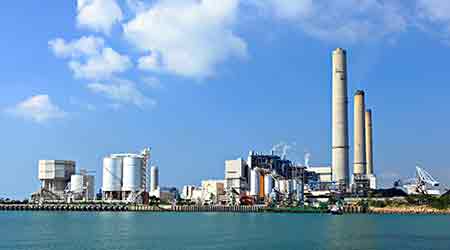Biggest Change in Energy Markets Is Natural Gas Pricing
Second of a 4-part article on utility costs and what drives them
The last decade has seen a variety of changes to energy markets, not the least of which was the crash in natural gas pricing due to advances in techniques for extracting it from underground veins of shale, such as hydraulic fracturing (commonly known as “fracking”). Since 2008, a huge increase in natural gas supply caused its wholesale price to drop by almost 2/3, making its use in power generation competitive to coal-fired and nuclear power. Where supply can be 50 percent or more of a total electric bill, overall electric rates dropped a third or more. Fracking currently provides about one-third of all natural gas in the U.S.
At the same time gas prices were dropping, however, many utilities used that opportunity to build out their transmission and distribution assets, raising delivery charges to pay for them. Such changes are altering the cost split between charges for consumption, which are generally related to supply, and those for peak demand, which are based on fixed costs, such as transmission and distribution systems. The end result may affect how customers try to control their electric bills: some efficiency measures — variable speed drives, as one example — may significantly cut consumption without necessarily having the same effect on peak demand.
Due to its lower price per Btu, natural gas is now rivaling coal as the source behind most of the electricity made in the U.S. Changes in emissions regulations at both federal and state levels are also raising the proportion of power coming from natural gas. As a result, price volatility endemic to the gas market is increasing fluctuations in power pricing where utilities use gas for generation, or buy power from non-utility suppliers doing so. During the cold 2014 winter, such volatility caused average electric rates for some customers in New England, which is increasingly dependent on gas-fired generation, to double from one month to the next.
The shift to natural gas is also spurring replacement of coal-fired generators with gas-fired units. To cover the fixed costs of those new plants, wholesale power markets have seen increasing capacity charges that may then boost utility demand charges.
The net impact of such changes varies widely by location, such as proximity to major pipelines. While some customers try to project power prices by watching the NY Mercantile Exchange (NYMEX) gas price at the Henry Hub in Louisiana (the starting point for some eastern gas pipelines), the actual cost at delivery points may differ greatly from it. That difference (due to pipeline charges) is called “basis.” During cold weather, the delivered price of gas at a power plant may then be double or even triple the NYMEX price. At other times, the delivered price may be below the NYMEX because the gas is actually coming from nearby fracked wells, instead of states near the Gulf of Mexico. Such differences are, in turn, spurring expansion of natural gas pipelines that may, over time, cut or limit basis cost.
Bottom line: greater dependence on natural gas for power generation widens price swings and alters price structures, even as it may lead to lower average cost.
Related Topics:















